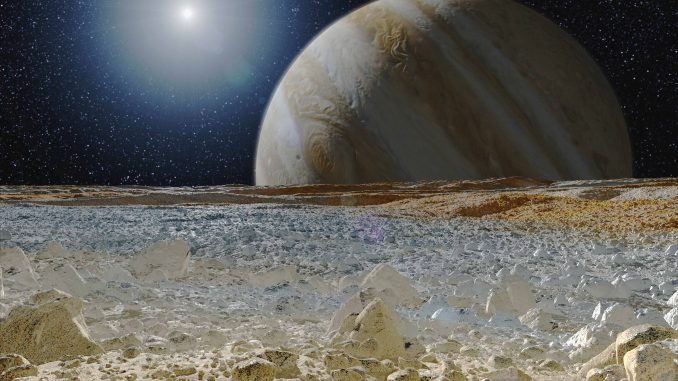
When we think of extraterrestrial life, the thought of a cute brown creature with an affinity for Reese’s pieces might pop into some of our minds. For others, they may be what nightmares are made of: slender, creepy looking beings with big dark eyes and reptile-like skin.
Though their existence has not been scientifically proven outside of pop culture, questions still remain as to whether Earth is in fact the only life-sustaining planet in the universe. With this comes another simple, yet astounding question of self-reflection. Are we really alone?
On Wednesday, April 20, NASA Astronomer Lou Mayo visited SUNY New Paltz to address this staggering question and introduce the complex existing evidence behind the possibility of life outside of Earth. In his talk, titled “The Search for Life in the Universe,” Mayo laid out what we have already learned about the possibility of extraterrestrial life from examining life on Earth and the conditions out there that could support life beyond the blue planet.
When taking into account the extreme conditions on other planets and moons in the universe, it may be hard to imagine that they could possibly sustain life. But in many places throughout our own planet, life is sustained even in the most radical of conditions, Mayo said.
By looking at species like tube worms, which live near blazing hot hydrothermal vents at the bottom of Earth’s oceans, we can distinguish under which range of conditions life may be possible. If life can exist in the harshest conditions on Earth, Mayo said, it is likely that it may be able to exist in the harsh temperatures and pressures of other planets or moons as well.
“Some forms of life thrive in these conditions, so when we start looking for life outside the Earth, all of a sudden the possibilities for it and the places we can look for it expand enormously,” Mayo said.
One of these spectacular life forms are tardigrades, also known as “water bears.” These microscopic, water-dwelling animals can live just about anywhere in the world from the Antarctic ice, deep-sea trenches or inside moss in our own backyards.
Tardigrades are extremely resilient; they can go without food or water for 30 years and are currently the only known animal to survive in space.
“Tardigrades have been found alive and well outside the International Space Station,” Mayo said. “Radiation doesn’t seem to bother them, extreme temperatures are easy and with a lack of oxygen or any air for that matter, these guys just thrive.”
When assessing the conditions in planets or moons where temperatures are extreme and there is no oxygen, chance of life doesn’t seem so impossible after all. To support life, however, a planet or moon needs liquid water. When they have that, potential for life can arise, Mayo said.
“On Earth, we know that everywhere we find liquid water, we can find life,” Mayo said. “Therefore, evidence of water on another planet can ultimately be evidence of life.”
Throughout the solar system, there are plenty of candidates that have this evidence of water, but one stands out glaringly among the rest: Jupiter’s sixth-closest moon, Europa.
Beneath this icy moon’s surface lies a suspected ocean of liquid water which could host conditions favorable for life. NASA is currently pursuing this so-called “Alien Ocean” by developing a radiation-tolerant spacecraft to send into Jupiter’s orbit, which will get close enough to Europa to gather more data on the moon.
Though the mission is slated for sometime in the 2020’s, NASA has already selected nine important instruments that will gauge the moon’s composition, including a radar to search for subsurface lakes and a magnetometer to help determine the depth and salinity of its ocean.
Though complete evidence of life outside the Earth has not yet been determined, the room for new findings and the capacity for human wonder is vast, Mayo said.
“There are environments in the solar system that have potential for life, and in some cases we can go there,” Mayo said. “It’s expensive and dangerous, but we can do it. We’re explorers at heart, aren’t we? We’re explorers, we always have been. It’s in our DNA.”
